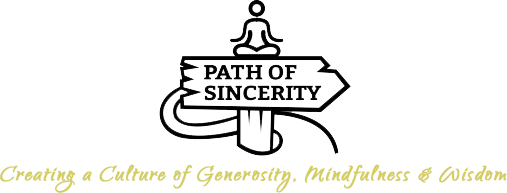
The following reflection originally appeared in the newsletter I sent out on September 20th, 2022.
Feel free to read just the bold words and skip the rest, maybe even only reading the sections that interest you.
——————
Introduction
In meditation, we want to apply ourselves in a way that’s “relaxed yet engaged.”
To give an analogy, consider college students in a classroom. There will be some in the room who are listening attentively and participating in the discussion, but at the same time, aren’t getting tense when they don’t understand something, and likewise aren’t worrying about their performance or grade. They are just showing up for this moment in a way that’s relaxed yet engaged.
Similarly, in meditation, we practice with a sense of interest and willingness to greet whatever happens, but without getting tense, agitated, worried, or self-critical about how it goes. We’re just here for this moment, whatever it is, in a way that’s relaxed yet engaged.
In today’s reflection, I’ll deconstruct this theme, highlighting what it looks like when we go too far to one side or the other, and offer some strategies to find the sweet spot where we’re right in the middle, relaxed yet engaged.
A Couple Of Notes On The Sweet Spot
For starters, you might visualize a pendulum swinging, where “relaxed yet engaged” is the balanced still point in the middle, and that we can swing either to the side of checked-out (maybe “too little effort”) or to the side of serious/striving (maybe “too much effort”).
Sometimes meditators aren’t sure if their effort is balanced or not. In turn, one helpful approach is simply to ask yourself, “right now, am I checked out or apathetic?” and “right now, am I tense or striving?” If you can answer “no” to both of those questions, there’s a pretty good chance you’re somewhere near the middle.
Although, to refine your intuition for those two swings, consider the following:
What Checked Out Looks Like:
Joseph Goldstein succinctly describes this state as not “relaxed,” but rather “casual.” It’s when we’re some degree of pulled away from our experience. More specifically, this checked-out state might involve any of the following:
- Nihilism, apathy, disinterest, or not caring
- Aversion, especially not wanting to deal with something difficult
- Disassociation
- Losing touch with our aspiration or “why” we’re meditating
- Treating meditation like a “chore” that we just need to check off the list
- Doubt in either our ability or in the practice we’re doing
- A sort of lethargy that comes from a slouched posture or a slouched mind
One of the sneakiest ways we become imbalanced on the “too relaxed” side of the pendulum is through the “near enemy” of equanimity, which is indifference. When we’re indifferent, we might think we’re actually pretty contented, calm, and equanimous, but there are little threads of any of the above bullets that have snuck in.
What Serious/Striving Looks Like:
The serious/striving mode is when we’re applying too much energy. It almost always features some amount of tension, either physical (like a clenched jaw, forehead, or abdomen), or emotional or mental. More specifically, it might feature any of the following:
- Trying really hard to “do it right” or “understand the method or meditation concepts”
- Frantic, overly intense efforting
- Focusing too much on results, and becoming anxious, nervous, or unsatisfied in the process
- Frustration, irritability, or self-criticism when we believe things “aren’t going well” or we’re still experiencing “the same” obstacles over and over
- The feeling of always needing to be “doing” something
How To Find Balance?
The most basic instruction will forever be simply becoming aware, in real-time, of whether we are “too relaxed,” “too engaged,” or “relaxed yet engaged.” In noticing these things, we acknowledge to ourselves, either verbally or wordlessly:
Too relaxed:
- “Indifferent”
- “Apathy is here”
- “Chore mindset”
- “Disliking how the body feels”
Too much effort:
- “Tension is happening”
- “Serious”
- “Striving”
- “Results mindset”
Balanced:
- “Balanced effort”
- “Relaxed and engaged”
- “Gently perseverant”
- “Being-with mindset”
When we become aware of an imbalance, it’s important to allow that experience to be here. To not turn it into a problem. In this act of being-with it, we give our inner wisdom a chance to naturally gravitate us back towards balance.
However, beyond this more subtle awareness+wisdom approach, below are some specific strategies we can apply when we’re imbalanced:
What To Do When We’re Too Relaxed / Checked Out
The most basic instruction is simply to bring in a little more engagement. Here are some of the ways I’ve found helpful to do this:
- Arousing curiosity or interest. Instead of sitting down and thinking, “well at least I’m sitting, so whatever…” we get interested in the present moment, in what happens, in being with our bodies & minds. Sometimes we can ask a specific question, like, “what’s happening?” or “how is the breath changing?” or “how is the self appearing?” Other times, it’s just a gentle sense of interest we bring in, like how we are when watching a movie we really enjoy.
. - Choosing to be here. During meditation, I’ll sometimes ask myself, “why am I meditating?” or “do I really want to be doing this?” Ultimately, this bullet is about connecting with our “why” and our deepest aspirations. When we check in with ourselves and find that place within that really wants to show up for this moment, we can find a capacity to more deeply “choose” to be meditating.
. - Channeling a true okayness with feeling spacey, irritable, molasses-like, restless or sleepy. Usually, we disengage when the part of us that dislikes how we feel takes over.
. - Bringing in some loving-kindness. It doesn’t need to be a full-on mettā meditation, but maybe peppering in a little well-wishing, like once or twice, “may I show up for this moment,” “may I give myself the gift of presence,” “may I love myself,” etc. On a bigger picture level, spending some months or years focused on loving-kindness can be a great aid to becoming more engaged.
. - Having an upright posture. An engaged body tends to lead to an engaged mind.
What to do When We’re Too Serious / Tense
The basic instruction is simply to relax. We can relax both the body and the mind.
- To relax the body, it’s a lot about softening our muscles, such as the jaw, abdomen, shoulders, and forehead. Softening our posture so we’re not tight, stiff, or rigid in how we’re positioned. Some deep breaths can also go a long way.
. - To relax the mind, it’s a lot about having a radical acceptance of whatever is present. Softening our expectations, our resistances, and our desires for particular states or outcomes. We really allow ourselves to feel just as we do. In meditation, we can remind ourselves of this several times — i.e. “how I feel right now is okay.” The more we understand freedom is not found in “the future,” but rather is relaxed into “right now,” it becomes easier and easier to soften our seriousness.
. - Relaxing our perfectionism. Ultimately, this is just relaxing our mind, but it isn’t so much an “in the moment” relaxation as a bigger picture one. When we are incapable of being where we are — just okay, still learning, not whole yet, etc. — the result is seriousness, tension, and striving. It’s essential to see meditation as a long-term process that needs a fair bit of patience and perseverance.
. - Calm-Abiding meditation. Sometimes called samatha meditation, this practice involves simply bringing our attention to an anchor, like the breath or sounds, in a relaxed and gentle way. As many times as we get distracted, we gently bring it back to that anchor. This can do wonders for relaxation.
. - Relaxing our thoughts. Our thoughts can spin us in all sorts of webs of worry, over-analysis, too much figuring it out, and, really, just scatter our energies. In turn, I often say to students (and myself!), “out of the thoughts, into the body.”
The Swings of the Pendulum
For many years, I would undergo very hard swings on the relaxed/engaged pendulum. On one side, I would touch into deeply passionate and inspired modes, but they were very unsustainable, and I would eventually become exhausted and bottom out into a place of apathy and indifference. From there, the only way I knew to get out of the apathy was to fabricate an intense passion for something else — and so the cycle continued.
As I started getting into meditation and learning more about this dynamic, I at first would overshoot pretty hard. In other words, when we’re starting from gross imbalance, it’s pretty difficult to just gently glide back to center. This is both normal and okay!
However, we eventually learn to moderate these swings and work more with subtleties. We get a better intuition for what balance looks/feels like. And, the more we touch into that center place, it usually takes just the slightest awareness and inner tweaking to come back to balance.
In other words, as you step more into a relaxed yet engaged effort, be very gentle & patient with yourself, and treat it as a process of learning as opposed to another thing that provokes strong reactions, like checking out or tense striving.
Conclusion
It’s helpful to know our own patterns. In turn, perhaps consider how you move along this pendulum? Does it seem like you’re just stuck in one particular imbalance, like always feeling nihilistic and checked out, or continually tense and tiring yourself out from over-efforting? Do you have any reliable ways to come back to center?
Simply by starting to pay more attention to this dynamic, slowly slowly, I have total confidence you’ll learn to apply yourself more and more in a way that’s relaxed yet engaged.
It’s worth it!
—————-
If you would like to get a monthly’ish email with reflections like this one, along with some event updates, sign up here for the newsletter.
